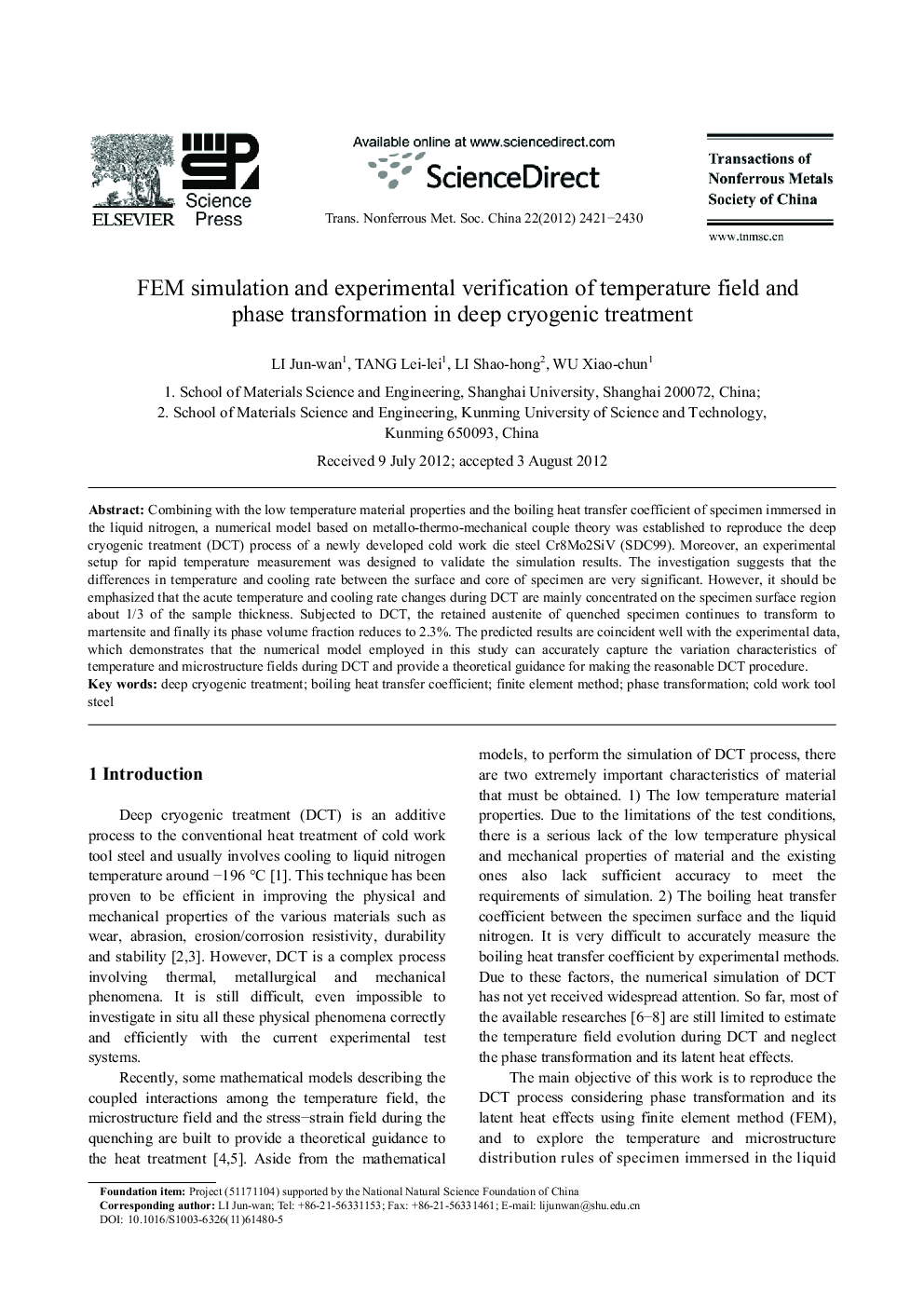| Article ID | Journal | Published Year | Pages | File Type |
|---|---|---|---|---|
| 1637185 | Transactions of Nonferrous Metals Society of China | 2012 | 10 Pages |
Abstract
Combining with the low temperature material properties and the boiling heat transfer coefficient of specimen immersed in the liquid nitrogen, a numerical model based on metallo-thermo-mechanical couple theory was established to reproduce the deep cryogenic treatment (DCT) process of a newly developed cold work die steel Cr8Mo2SiV (SDC99). Moreover, an experimental setup for rapid temperature measurement was designed to validate the simulation results. The investigation suggests that the differences in temperature and cooling rate between the surface and core of specimen are very significant. However, it should be emphasized that the acute temperature and cooling rate changes during DCT are mainly concentrated on the specimen surface region about 1/3 of the sample thickness. Subjected to DCT, the retained austenite of quenched specimen continues to transform to martensite and finally its phase volume fraction reduces to 2.3%. The predicted results are coincident well with the experimental data, which demonstrates that the numerical model employed in this study can accurately capture the variation characteristics of temperature and microstructure fields during DCT and provide a theoretical guidance for making the reasonable DCT procedure.
Keywords
Related Topics
Physical Sciences and Engineering
Materials Science
Metals and Alloys
Authors
Jun-wan LI, Lei-lei TANG, Shao-hong LI, Xiao-chun WU,
